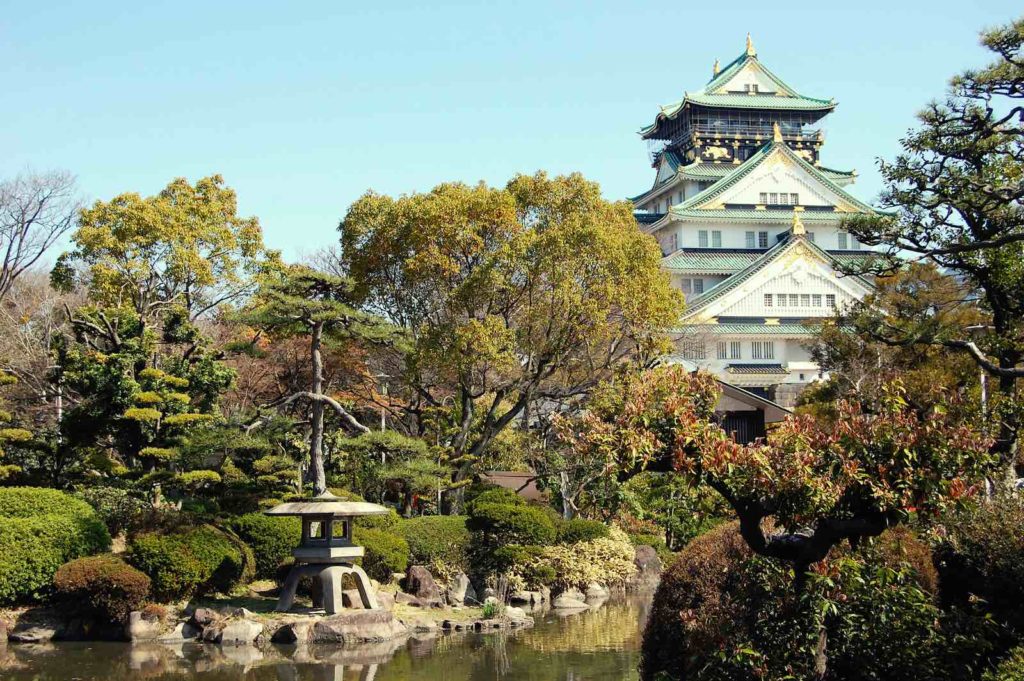Osaka Castle Park
Graced by royalty.
Before visiting Osaka Castle Park, many may mistake it as merely an obstacle to trudge through in order to reach Osaka Castle. However, this gorgeous urban oasis has a lot going for it. There are fountains, forests and gardens, a whimsical playground, a flower market in spring and fall, and many more attractions adorning the 260-square-acre area.
Every year, as winter melts into spring, beautiful plum and cherry trees blossoms flower in the park’s gardens turning the grounds into a vibrant wonderland. Beautiful and bustling in any season, take some time to discover the park while visiting the vibrant Osaka city.

Tourists walk below Osaka Castle during the spring cherry blossom season.
A quick history
A war-ridden history stretches back to the 16th century when the famous daimyo (feudal lord) Toyotomi Hideyoshi decided to build Osaka Castle on the site. The area served as a military stronghold on and off for centuries after that.
Osaka Castle Park officially opened in 1931. Shortly after the area was designated as a park, World War II broke out. The area was once again taken over by the army as a large arsenal and was in heavy usage during wartime. It wasn’t until after the conflict ended that the military barracks were removed and the area became a thriving recreational space.
Main attractions
Along with barbecue spaces, martial arts training facilities and memorial shrines — here are the main highlights of Osaka Castle Park.
Osaka Castle – Of course, this prominent castle is the main attraction. Though destroyed and rebuilt a number of times, the castle, which is now a museum, has long remained an important historical symbol of Osaka. On the grounds are souvenir shops, food trucks and a mysterious time capsule.
Osaka International Peace Center (Peace Osaka) – A museum focusing on war and peace. This is a very contentious place as, following political pressure in 2015, many exhibits depicting or implying Japanese war crimes were removed.

Photo by: jpellgen (@1179_jp) Nishinomaru Garden.
Important Cultural Properties – Osaka Castle may no longer exist in its original form, but many of the castle’s structures have stood for centuries, including Otemon Gate (The Main Gate), sections of the massive stone wall, the castle moat and a number of turrets. There are 13 government-designated Important Cultural Properties in all.
Nishinomaru Garden – A scenic Japanese garden providing a photogenic vantage point of the castle. Nishinomaru Garden features around 300 cherry trees and about 1,270 ume (Japanese plum) trees. This area is one of the best places to do hanami (cherry blossom viewing party), but besides the seasonal plants, inside the garden is a traditional tea house where you can enjoy Japanese snacks and drinks.
Blossom Schedule
The flower gardens are in bloom for a limited time at the start of each year, so if you want to see the blossoms, plan ahead!
- Plum blossoms: January to March
- Peach blossoms: March
- Cherry blossoms: late March – early-to-mid April
Topics: cherry blossoms, markets, Osaka, osaka castle, parks and gardens, spring


